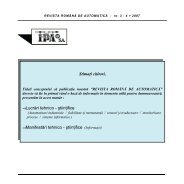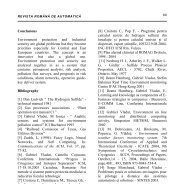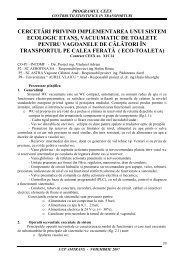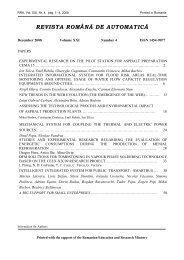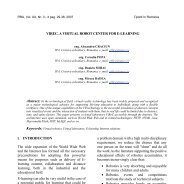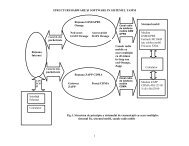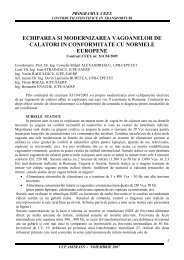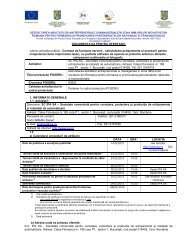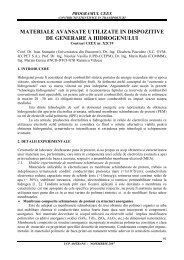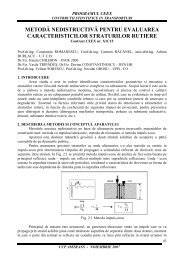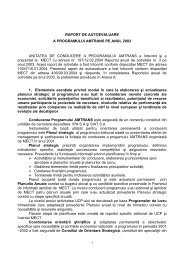0_ CUPRINS - IPA SA
0_ CUPRINS - IPA SA
0_ CUPRINS - IPA SA
You also want an ePaper? Increase the reach of your titles
YUMPU automatically turns print PDFs into web optimized ePapers that Google loves.
ZONING OF AREAS AND POPULTED CENTERS FOR REDUCING<br />
THE EFFECTS OF NATURAL DI<strong>SA</strong>STERS<br />
PhD. Eng STOIAN Ioan , PhD. Eng. OLARU VIRGIL<br />
National Centre of Geodesy, Cartography, Photogrametry and Remote Sensing, Bucharest<br />
Abstract: For monitoring natural hazards are necessary zoning of areas within<br />
localities to reduce the effects caused by frequent natural disasters such as: floods,<br />
landslides, earthquakes, etc.. In all cases for zoning are necessary maps in digital format and<br />
the digital model of the terrain - MDT. For damage assessment and decision making it is<br />
important that these maps are suitable to the simulation, according to the obtained results<br />
from simulations to determine exactly which area will be affected with a high probability.<br />
Based on these forecasts we can do multiple scenarios progressing, risk analysis, detailed<br />
simulations.<br />
This involves handling a large number of very diverse data unevenly distributed<br />
geographically. Zoning areas within areas and populated centres is intended to reduce the<br />
effects of flooding.<br />
Keywords:<br />
1. Introduction<br />
For monitoring natural hazards are necessary zoning of areas within localities to<br />
reduce the effects caused by frequent natural disasters such as: floods, landslides,<br />
earthquakes, etc..<br />
In all cases for zoning are necessary maps in digital format and the digital model of<br />
the terrain - MDT. For damage assessment and decision making it is important that these<br />
maps are suitable to the simulation, according to the obtained results from simulations to<br />
determine exactly which area will be affected with a high probability. Based on these<br />
forecasts we can do multiple scenarios progressing, risk analysis, detailed simulations.<br />
This involves handling a large number of very diverse data unevenly distributed<br />
geographically.<br />
Zoning areas within areas and populated centres is intended to reduce the effects of<br />
flooding.<br />
Flood risk management means applying policies, procedures and practices with the<br />
objectives of identifying risks, their analysis and evaluation, treatment, monitoring and<br />
reassessment to reduce their risk so that human communities, so that all citizens can live,<br />
work and meet the aspirations in a sustainable physical and social environment .<br />
Flood risk is characterized by the nature and probability of producing, the exposure of<br />
receptors (number of population and goods), the susceptibility to flooding of receptors and<br />
their value, resulting that risk reduction needs to be done on influencing its characteristics.<br />
The main problem in the management of flood risk is the one of the accepted risk by<br />
the public and the decision makers, knowing that there is no total protection against flooding<br />
(zero risk), as there is no consensus on acceptable risk. Consequently, acceptable risk must be<br />
the result of a balance between risks and benefits attributed to an activity as a consequence of<br />
risk reduction to flooding, or of a governmental regulation.<br />
Mitigating the consequences of flooding is the result of an extensive combination of<br />
preparatory measures and actions before the occurrence of the phenomenon, the management<br />
54



